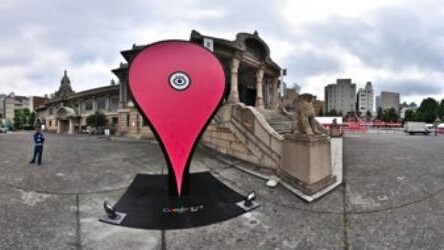

As smartphones have become as necessary to savvy consumers on the go as their wallets, they’ve made location services irresistible to retailers that want to target customers located near their stores and influence their buying decisions with targeted compelling offers. Research firms estimate steep growth of LBS in the next few years; Constellation Research, Inc. estimates these services will grow, generating up to $10.7B in revenue by 2013. After the first stage of experimentation, what are the DOs and DON’Ts of location-based marketing; are check-ins, discounts and freebies all there is to it?
DO aim for utility: Badges and points are fun, but in order to engage with customers and build a long term relationship, you need to provide relevant information and apps that leverage location information to make shopping more convenient. A recent study found that 9 out of 10 mobile Internet users have logged on while in a store, most of them (50%) to research their buys and, for just over half of them (51%), in-store mobile research has led to a purchase. Brands could use customer’s location to provide relevant information to their products and services in order to facilitate their research and ultimately trigger a purchase.
Branded content is warmly embraced, especially by younger shoppers, showing that targeted recommendations and smart copy writing could solidify the connection between the in-store and online experiences. So far we’ve seen mostly media brands, using location relevancy for marketing purposes, like Bravo TV, Metro News Canada and National Geographic.
DON’T Be A Stalker: There is enough worry about privacy issues concerning location-based services, without brands stalking their customers or pushing aggressive offers and promotions to their smartphones. As Pauly D knows best stalking is a huge turn off and once trust over use of customer’s data is lost it is hard to regain. Show respect to your customers with opt-in and out options, to avoid spamming them with unnecessary information.
DO know what to measure as success: When McDonald’s announced they managed to increase foot traffic by 33% through their Foursquare campaign there was a lot of speculation about what foot traffic meant and how they measured it. As for all social media platforms, the issue of how each brand defines and measures ROI is hot for LBS too. Information about the number of check-ins doesn’t seem enough, it needs to be combined with information on spending, purchasing choices and demographics over time in order to derive conclusions about customer buying behavior.
DON’T neglect loyalty: Location-based services provide a great platform for loyalty programs, but so far this only translated in rewards for check-in points. Loyalty programs with use of LBS could help brands build strong customer relationships online and offline, providing rewards cut out based on each customer’s social media profile. LBS could bridge the gap between the two worlds and offer custom made offers and personalized customer service, providing the basis for a long-term engagement between a brand and its loyal fans.
DON’T isolate location-based services: Running fragmented campaigns, programs or projects is confusing to your customers. Integration is key to success, especially at a time when social commerce is getting stronger and stronger. Enrich social shopping on any platform, e-commerce, social media, in-store, with location relevant content.
Tasti D-Lite reported a 36% bump in sales with help from its Foursquare TastiRewards program. It also mixed things up by installing iPads, or Tastipads if you like, to provide product information and allowing users to check-in for reward points and sign up for “new flavor” promotional alerts to be sent to their smartphone. Don’t forget that if social networks are a useful tool for friends to get together online share reviews, make group buys and influence each others decisions, LBS can work like this in real life.
What are your favorite case studies of location-based marketing? What motivates you to connect with a brand on a location-based service?
Get the TNW newsletter
Get the most important tech news in your inbox each week.




